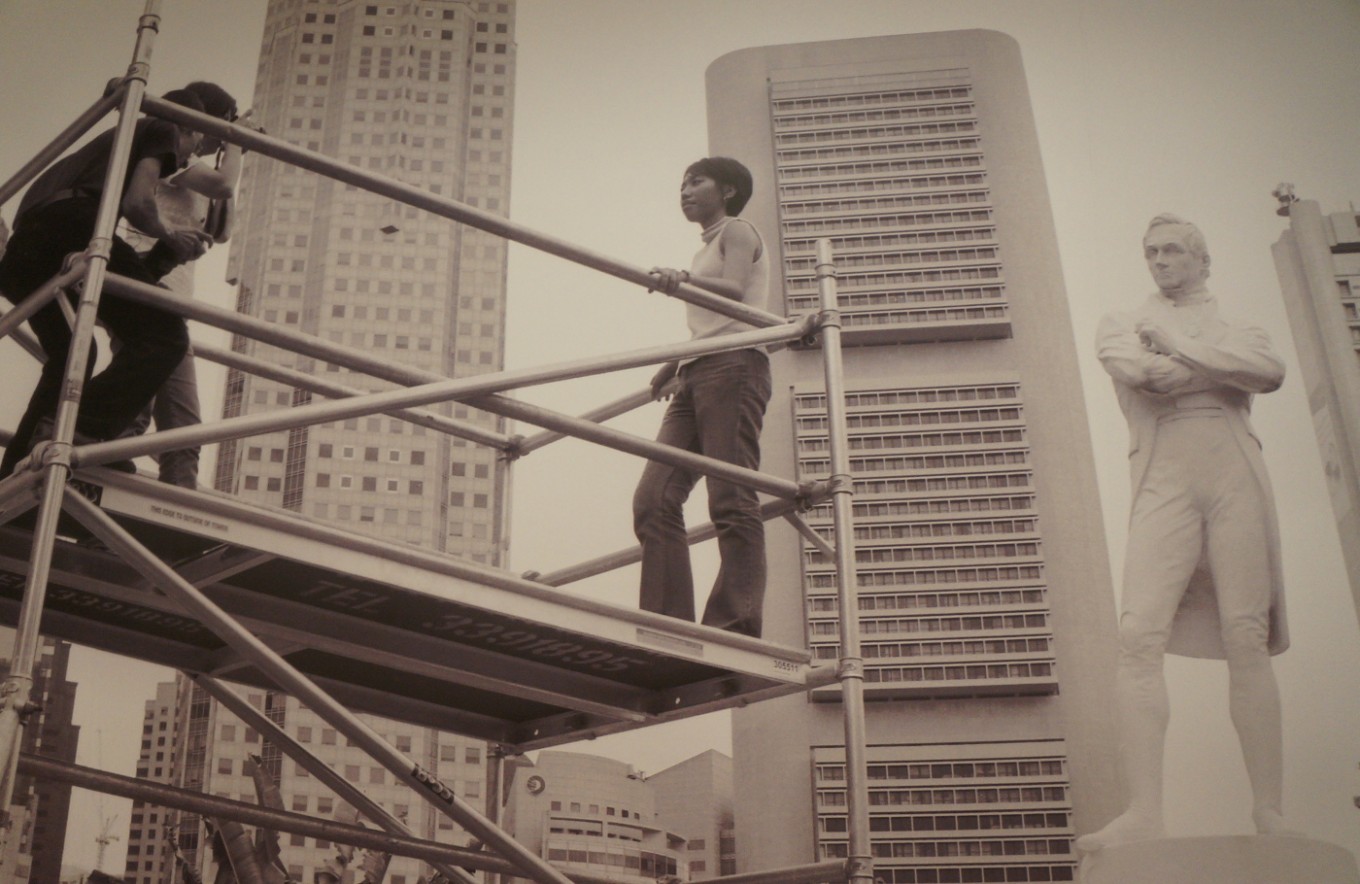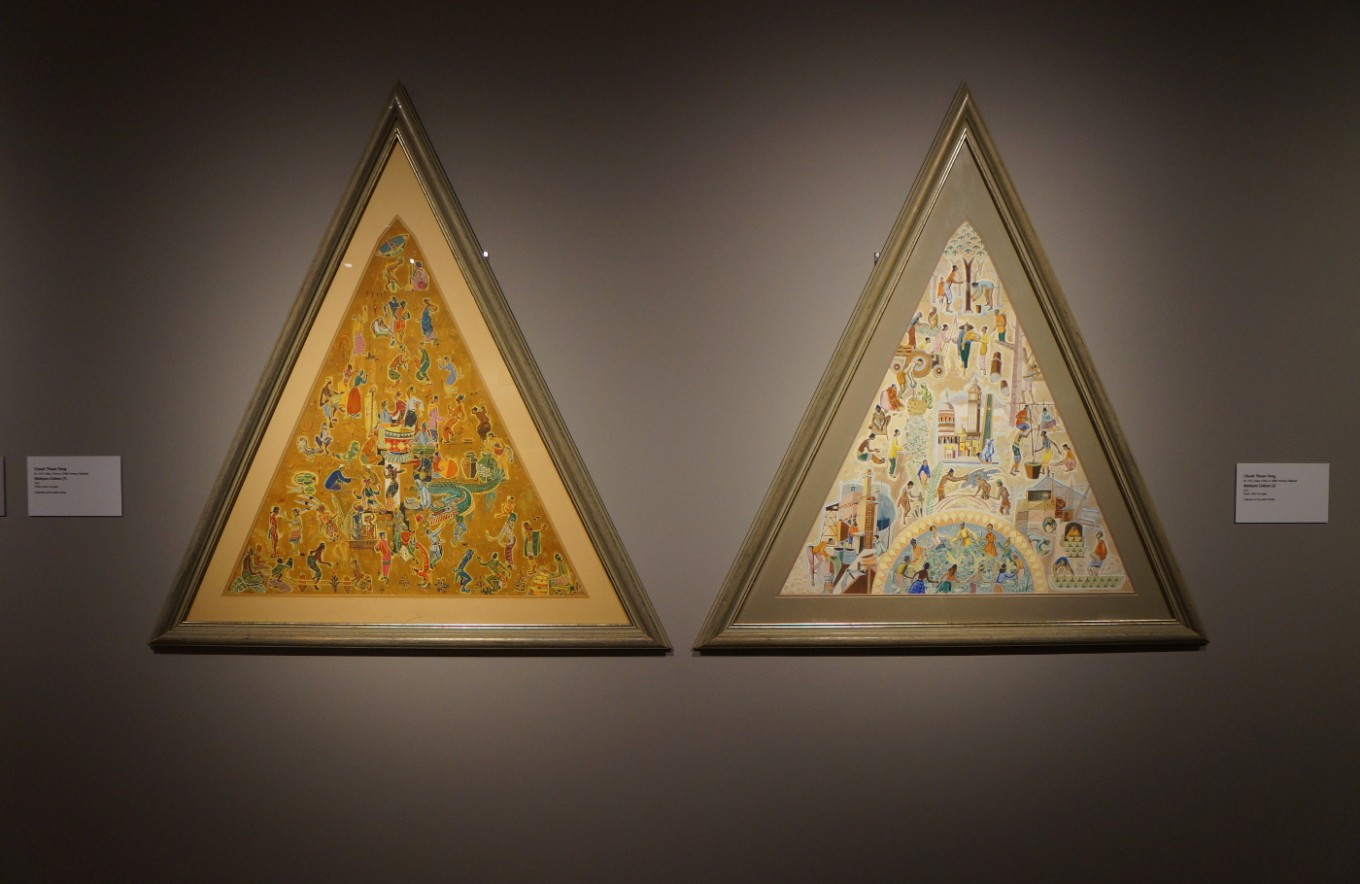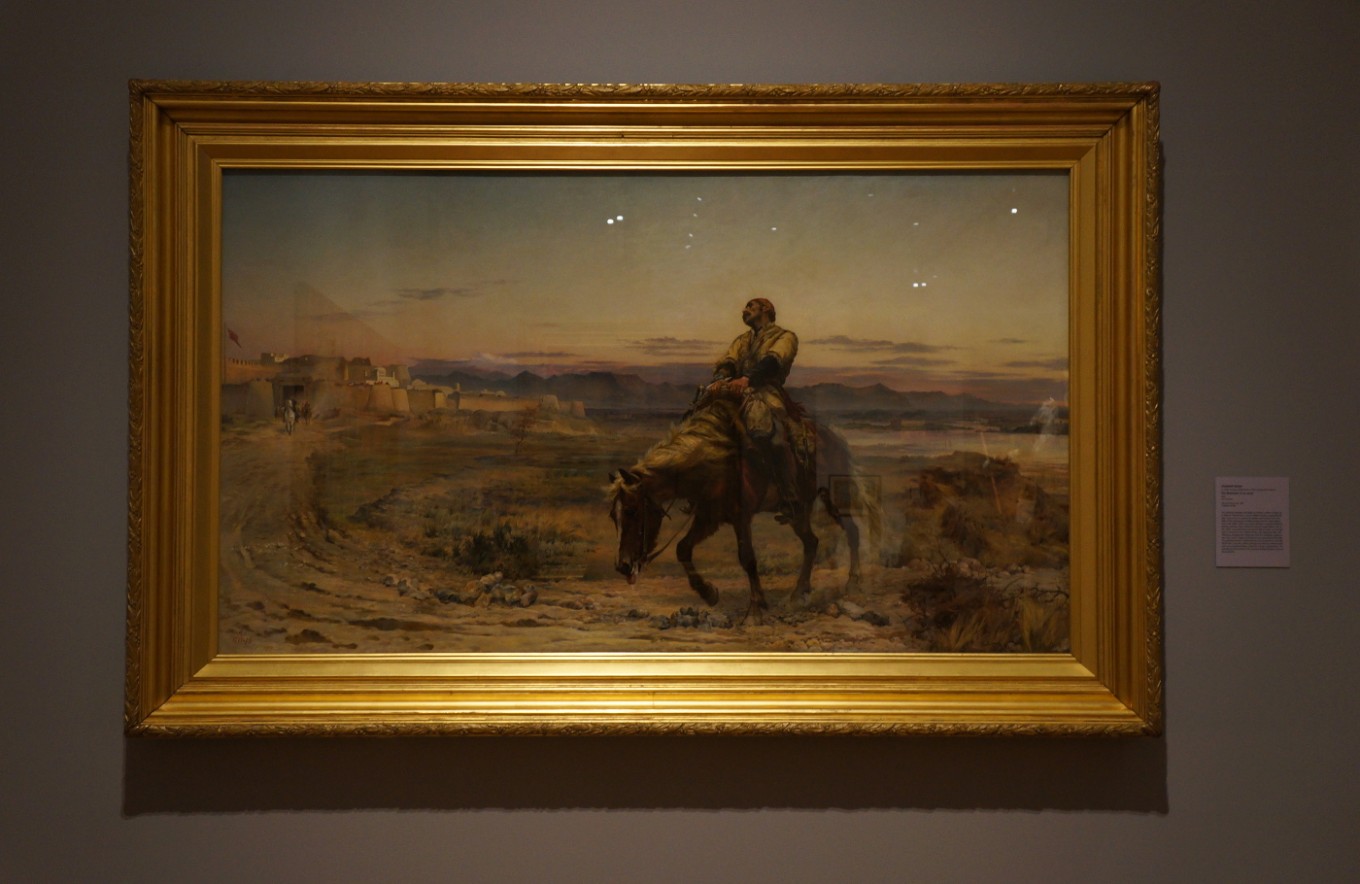Popular Reads
Top Results
Can't find what you're looking for?
View all search resultsPopular Reads
Top Results
Can't find what you're looking for?
View all search resultsMust-see artworks at National Gallery Singapore
Change text size
Gift Premium Articles
to Anyone
T
hose traveling to Singapore and looking for something new can opt to visit the National Gallery Singapore's current exhibition dubbed Artist and Empire: (En)countering Colonial Legacies.
Inspired by the Artist and Empire exhibition at London's Tate Britain last year, the Singapore showcase adopts a contemporary perspective to critically examine artworks produced in relation to the colonial experience as well as the rise of modern art in former colonies in the Asia-Pacific region, especially Australia, Brunei, India, Malaysia, Myanmar and Singapore.
Slated to be held until March 26, the exhibition features many outstanding artworks, such as Sir Thomas Stamford Bingley Raffles (1817) by George Francis Joseph, the British Infantry Advance on Jerusalem, 4th of July 1879 (2015) installation by Andrew Gilbert and The Remnants of an Army (1879) by Elizabeth Butler.
Aside from those, here are some other artworks that you should not miss.
Untitled (Raffles) (2000)
 Untitled (Raffles) (2000) by Lee Wen.(JP/Ni Nyoman Wira)
Untitled (Raffles) (2000) by Lee Wen.(JP/Ni Nyoman Wira)
As the first thing that you see upon entering the exhibition space, the Untitled (Raffles) (2000) by Lee Wen portrays a statue of Sir Thomas Stamford Raffles, a colonial figure who is regarded as the founder of modern Singapore. Placed at a higher level, the statue seems to look down at visitors who approach it.
The gallery’s curatorial, collections and education director and the exhibition’s curator Low Sze Wee told The Jakarta Post that the statue's position portrayed the kind of relationship that existed during the colonial period between the colonizer and the colonized. However, Lee Wen also built scaffolding next to the statue and, as part of his piece, invited people to come up and be at eye level with Raffles to view things from a different perspective.
General Gordon’s Last Stand (1893)
 General Gordon's Last Stand (1893) by George William Joy.(JP/Ni Nyoman Wira)
General Gordon's Last Stand (1893) by George William Joy.(JP/Ni Nyoman Wira)
In General Gordon’s Last Stand (1893) by George William Joy, the figure of Gen. Charles George Gordon is memorialized as fiercely resisting his attackers in Sudan.
“In this painting he was depicted in an almost heroic [way], like he was at the top of the stairs, while the unruly mob of attackers were at the bottom,” said Low. “It then became an extremely famous painting, not talking about the defeat of the British but how General Gordon was such a symbol of bravery and loyalty toward the British Empire.”
Unfortunately, the general was later killed by local forces during a massacre in which his body was mutilated and his head was paraded around the streets.
(Read also: Singapore exhibition explores British Empire's artistic legacy)
Meeting of Generals Yamashita and Percival (1942)
 Meeting of Generals Yamashita and Percival (1942) by Miyamoto Saburo.(JP/Ni Nyoman Wira)
Meeting of Generals Yamashita and Percival (1942) by Miyamoto Saburo.(JP/Ni Nyoman Wira)
Commissioned by the Japanese army, Meeting of Generals Yamashita and Percival (1942) by Miyamoto Saburo immortalizes probably one of the darkest moments in the British history. In 1942, the Japanese government sent Miyamoto Saburo to Singapore to create a painting based on the surrender incident.
“But he did not witness the actual surrender; he came after it was done,” said Low. Therefore, he made sketches of the room where the event took place. He also had the chance to make detailed sketches of Yamashita and Percival.
However, some elements of the painting are fictitious. “We know that the British were carrying a white flag and a British flag, but they were not allowed to bring those flags into the room where the ceremony took place,” said Low. However, the flags were later inserted into the painting at the request of Japanese military authorities.
In addition to the actual event, the painting became proof that Japanese art is equally as impressive as Western works. “One idea that we want to bring forward in the exhibition is [that] painting is a subjective expression for artistic activity. So we have to understand how the arts were produced, [by] whom they were produced, and why they were produced,” Low explained.
The Secret of England’s Greatness (Queen Victoria Presenting a Bible in the Audience Chamber at Windsor) (1863)
 The Secret of England's Greatness (Queen Victoria Presenting a Bible in the Audience Chamber at Windsor) (1863) by Thomas Jones Barker.(JP/Ni Nyoman Wira)
The Secret of England's Greatness (Queen Victoria Presenting a Bible in the Audience Chamber at Windsor) (1863) by Thomas Jones Barker.(JP/Ni Nyoman Wira)
The Secret of England’s Greatness (1863) shows how British artist Thomas Jones Baker represented a popular story that circulated in England in the mid-19th century. In the painting, an African envoy meets with Queen Victoria to ask about the secret of England’s greatness as an empire. Instead of naming her armies or navies, she hands over a Bible.
“[The] Bible is the secret of England’s greatness to her. Religion,” Low said. Aside from the portrait, the painting also contains a carved, open Bible that contains the words: “Thy word is a lamp unto my feet, and a light unto my path. I love thy commandments above gold; yea, above fine gold”.
“I think this story nicely encapsulated another aspect about why the British were so keen to study and document other species, people, as well as flora and fauna. It is because they have a particular attitude toward people who are different from themselves,” Low explained.
“In the 19th century there were anthropological kinds of theories that tried to place people from different parts of the world into a kind of evolutionary order. So Europeans, being the most civilized, were at the top of the order, while the others who were different from the Europeans in terms of place, language and education were placed below the evolutionary order.”
Therefore, it could be perceived that the British as well as other Europeans felt they had a moral if not religious duty to bring civilization and education to places that they colonized.
Malayan Culture I & II (1957)
 Malayan Culture I & II (1957) by Chuah Thean Teng.(JP/Ni Nyoman Wira)
Malayan Culture I & II (1957) by Chuah Thean Teng.(JP/Ni Nyoman Wira)
This pair of works by Malayan artist Chuah Thean Teng is located in the exhibition’s third room, which shows how art developed during the transition as the British Empire declined and its colonies started to move toward independence. The gallery also takes a look at subjects that mattered to and were created by artists during the period, some of which were related to daily life.
“Chuah Thean Teng made these studies about Malayan culture,” said assistant curator Melinda Susanto, pointing at the left painting. “This was actually a study that was supposed to be made into large scale murals for the House of Representatives in Malaysia in 1963. So he would've included a range of culture and society from different ethnic groups in Malaysia.” Meanwhile, the second painting depicted the trade industry and Malaysian people during that time. (kes)







